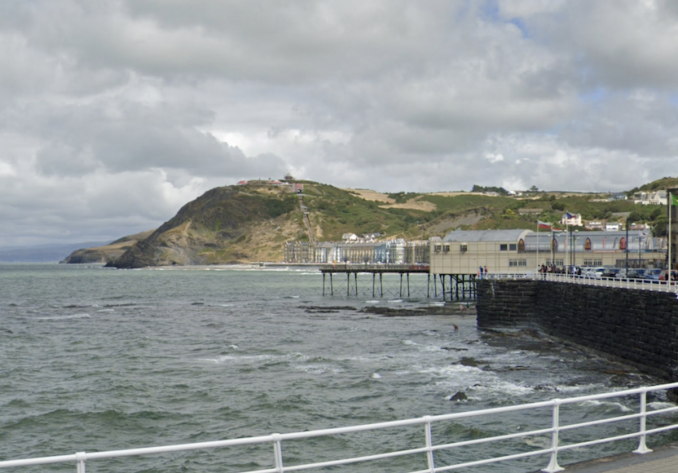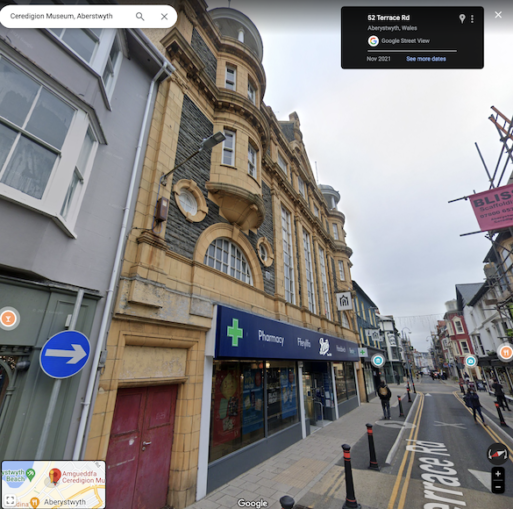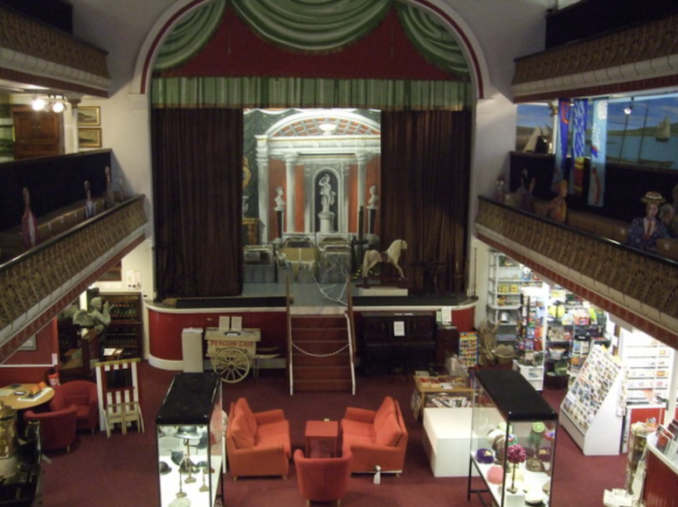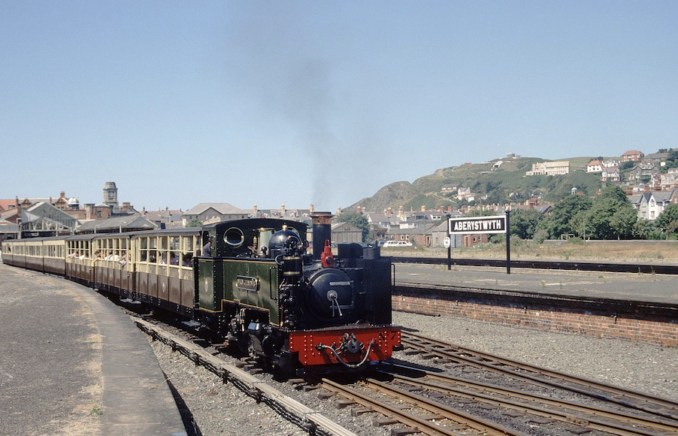Aberystwyth
Aberystwyth, colloquially known as ‘Aber’, is a university and seaside town located in Ceredigion, Wales. It’s the county’s largest town, with a population of 15,935, and sits on the west coast of Wales, offering scenic views and access to the Cambrian Mountains. This town is home to Aberystwyth University and the National Library of Wales, among other institutions. The climate is moderate, with temperatures ranging from 5.6°C to 28.0°C and an average rainfall of 43 inches annually.
In terms of attractions, Aberystwyth offers a variety of activities. Visitors can watch the sunset from Constitution Hill, ride the Cliff Railway, explore Aberystwyth Castle, or take a steam train to Devil’s Bridge. Other popular activities include walking the promenade, visiting the National Library, joining the Ceredigion Coastal Path, visiting St. Michael’s Church and strolling on the pier.
The name Aberystwyth translates to ‘the mouth of the river Ystwyth,’ reflecting the town’s geographical location. Despite its size, Aberystwyth is known for its strong sense of community and the rich history that permeates its streets.
The Pier

© Always Wortth Saying 2023, Going Postal
Aberystwyth’s Royal Pier, commonly known as Aberystwyth Pier, is an iconic landmark of the town. Opened in 1865, it was the first pier to be built in Wales. Over its long history, its length has significantly reduced due to storm damage, from its original 264 yards to the current 100 yards.
The pier offers a range of facilities and is a hub of activity, attracting both locals and tourists. It houses a bar and a restaurant, providing visitors with stunning views of Cardigan Bay while they dine. The pier also features amusement arcades, a snooker hall, and even venues for live music and comedy shows. It’s a perfect spot for a leisurely stroll, and on clear days, it offers breathtaking views of the sunset.
Interestingly, the end of the pier is home to Aberystwyth Starlings, a spectacle of nature where thousands of starlings roost under the landmark during winter evenings, creating mesmerising murmurations before they settle for the night. This event has become a major tourist attraction in itself.
Though it’s faced challenges over the years, Aberystwyth Pier remains a beloved part of the town’s heritage and a testament to Victorian engineering. It continues to provide entertainment and a sense of community for all who visit.
Today by the miracle of Street View one can stand on the exact spot from where my grandparents photographed the pier almost a century ago during their 1932 motorcycle and sidecar late honeymoon around North Wales.

© Google Street View 2023, Google.com
You can take a look around via the following link. Behind the photographer sits Aberystwyth Castle and an impressive war memorial. Poignant, both because my grandfather’s older brother, John, was killed on active service during the Great War and, unbeknown to the honeymooners, within a decade John’s son, also a John, would die in far away Algeria as part of an even greater conflagration.
Aberystwyth in the 1930s
As for the vista before them in happier times, Aberystwyth in the 1930s was a charming coastal town in West Wales. A glimpse into this era can be seen in a print titled “Aberystwyth from Constitution Hill, West Wales”. This sepia-toned image which can be viewed here showcases the picturesque coastline, crashing waves of the sea, and the quaint architecture of the town. The print conveys a sense of nostalgia and appreciation for the scenic beauty of Aberystwyth during that time.
During this period, Aberystwyth was home to notable landmarks like the historic Coliseum. The Coliseum, which functioned as a cinema and a museum, was a hub for cultural activities. In 2016 it re-installed a full-sized screen and projector, reviving its past glory.
The Coliseum
Originally, a wooden-built entertainment hall known as Phillips’ Hall stood on the site. Named after proprietor David Phillips, it lasted from 1891 to 1902 when it burnt down. Phillips then built an impressive new venue, complete with an arcade of shops on the lower level. Opened in 1905 and named the Coliseum, Phillips’s name is immortalised in mosaic panels at the entrance to the building.
Between then and the year of my grandparents’ visit, at least 5,000 events were staged at the Coliseum, including plays, films, eisteddfodau, political meetings and concerts. Coincidentally, in 1932 it was converted into a cinema and run by Olive and Harry Gale. After 45 years and nearly 4,000 programmes of films, the Coliseum closed in 1977. After lying derelict for several years the Coliseum was repaired, restored and re-opened in 1982 as a museum for the District of Ceredigion.

© Google Street View 2023, Google.com
As Puffins can see at a glance this is an Edward/Queen Anne style building of bull-nosed rubble with terracotta dressings. A central pedimented gable with apex niche contains a statue of Edward VII. The bays are divided by Ionic pilasters; the two outer bays have 2-storey (2nd and 3rd floor) bowed oriels capped by lead roofed open peristyle cupolas; the Art Nouveau oriel brackets rest on keystones to the semi-circular 1st-floor windows flanked by bullseye windows. The 1st and 2nd floors merged to the centre with full-height small pane sash windows. Indeed.
What you can’t see on Street View is the interior which I am led to believe by people who understand such things contains a rectangular auditorium with a two-tier gallery, elliptical proscenium arch and cast iron columns with Corinthian capitals. Suspected as much.
The 2016 restoration reinstalled a full-sized screen and projector as part of a £1.3m Heritage Lottery Fund redevelopment called ‘New Approaches’. Additionally, the Friends of Ceredigion Museum secured a £13,917 Community Grant to reinstall the cinema facility. The historic Grade II-listed building was re-equipped with comfortable seating, modern audio-visual equipment and a hearing loop with the intention being to host bigger and better community and public events.

The Coliseum Theatre in Aberystwyth,
William Pugh – Licence CC BY-SA 2.0
I hope my grandparents visited the Coliseum and if they did so I also hope they strolled a few hundred yards further along from its Terrace Road home to Aberystwyth station, the western terminus of the Vale of Rheidol Railway.
The Vale of Rheidol Railway
The Vale of Rheidol Railway is a historic narrow-gauge steam railway that offers passengers a picturesque journey through the Rheidol Valley in Wales. Beginning in Aberystwyth, the railway travels to Devil’s Bridge, allowing passengers to take in breathtaking views of fields, woodlands, and mountains along the way.
Opened in 1902, the railway is dedicated to preserving the heritage of the line, featuring historic steam locomotives and vintage carriages. The railway also provides facilities such as a shop and cafe at Aberystwyth Station. It also offers the flexibility to charter a private train. The journey duration is one hour each way, and tickets can be bought either in advance or on the journey day. The train is pet-friendly, and bicycles can also be accommodated, provided they are reserved in advance.

A Vale of Rheidol train leaving Aberystwyth,
Herbert Ortner – Licence CC BY-SA 3.0
The railway was authorized as the Vale of Rheidol Light Railway in 1897 and was initially used to transport ore from local lead mines and timber for coal mines in South Wales. Although there were plans to convert the line to electric traction in 1912, these plans were abandoned when control of the line was passed on to the Cambrian Railways. The railway faced hardships during World War I and further declined after being absorbed by the Great Western Railway. Goods services were withdrawn in 1923, and the line was closed during World War II. The railway is now owned by a charitable trust and operates with locomotives and carriages built by the Great Western Railway between 1923 and 1938.
Technically the line is of the 1ft 11 3/4 inch gauge and coincidentally runs for 11 and 3/4 miles. Following the withdrawal of mainline steam from British railways in 1968, steam services continued on the Vale of Rheidol and as such it became the only steam-operated line on the British Rail network.
Services were provided by three narrow gauge steam engines, former Great Western 2-6-2T’s built between 1923 and 1924. Puffins of a certain age and inclination will recall the anomalous 98007-009 entries in the Ian Allan ABC spotters guides. Briefly, 98010 also made an appearance. This was a diesel locomotive built in 1987 from parts left over from a cancelled Mozambican order for Baguley-Drewry 0-6-0s. It was allocated the TOPS number 98010. The Brecon Mountain Railway purchased the Vale of Rheidol Railway from British Rail at privatisation less than two years later and left the national rail system to become a heritage railway for residents and tourists.
All well and good, but does that make 98010 British Rail’s shortest-lived locomotive? There will be a Puffin out there who knows!
© Always Worth Saying 2023



